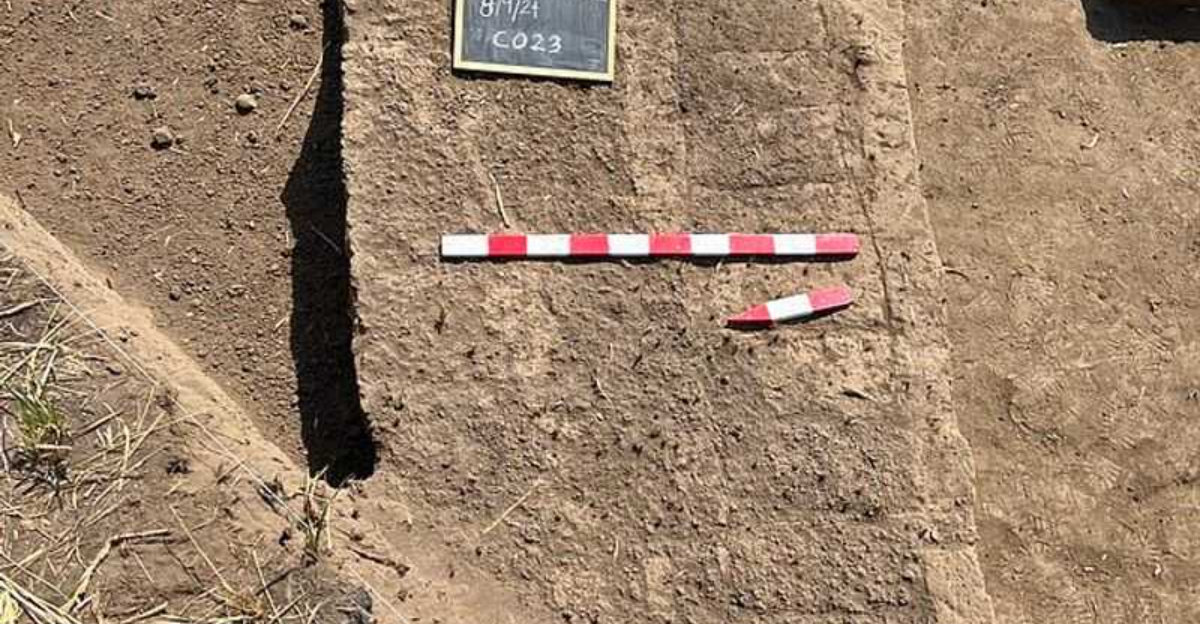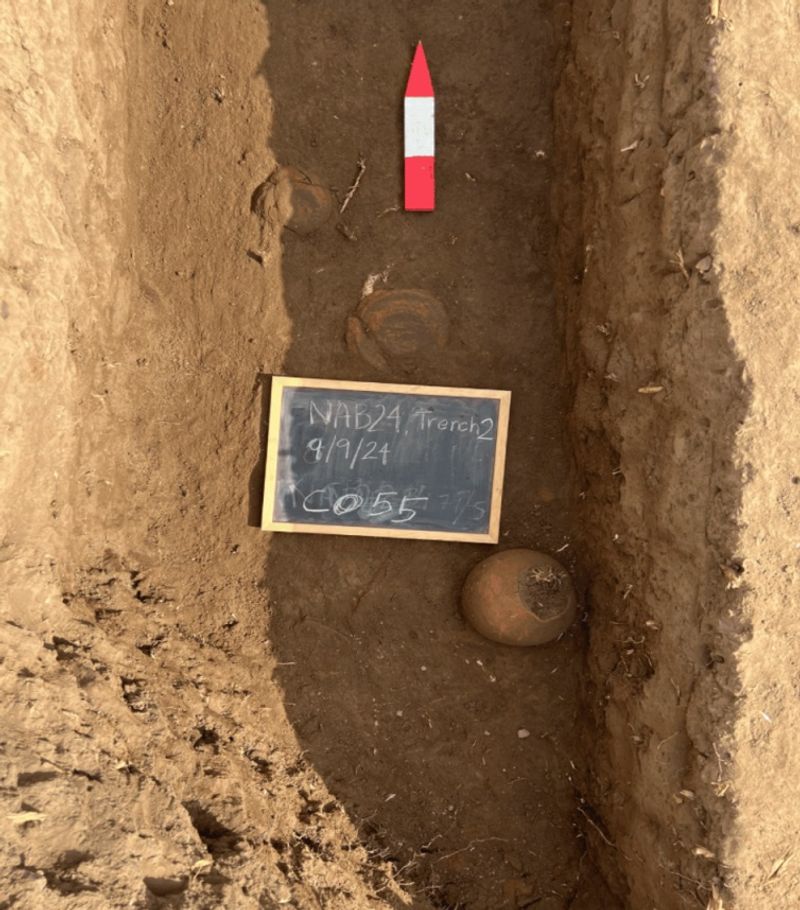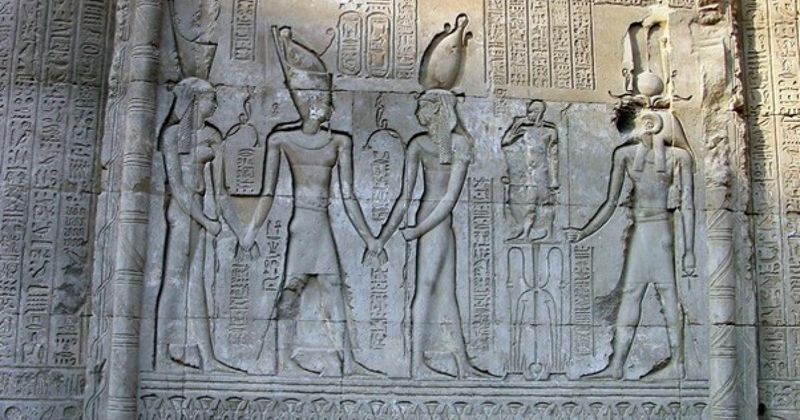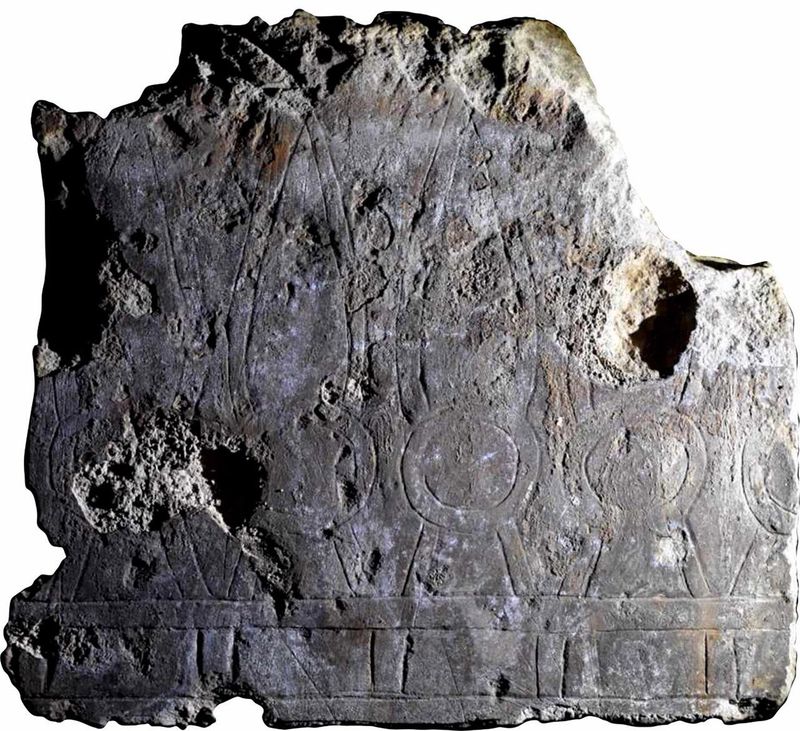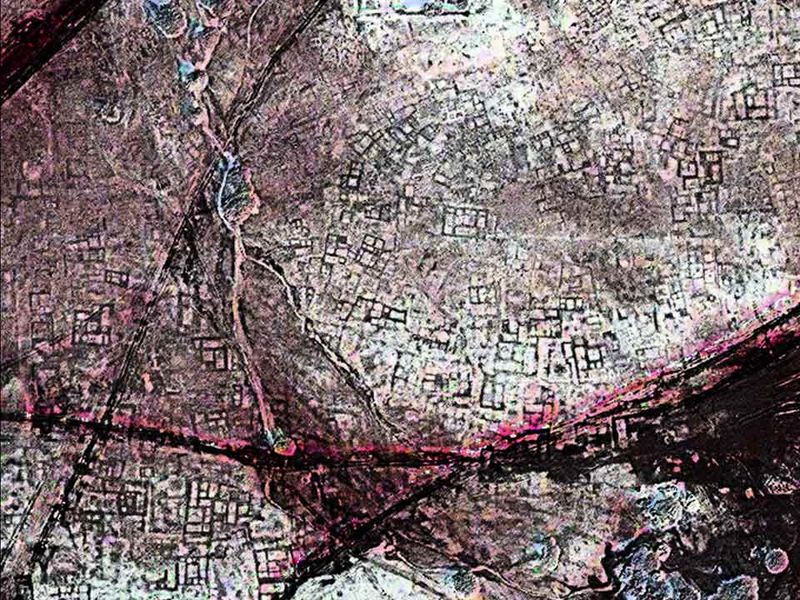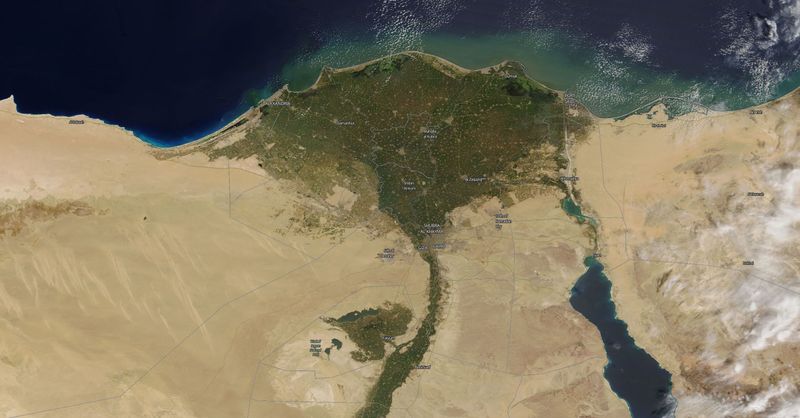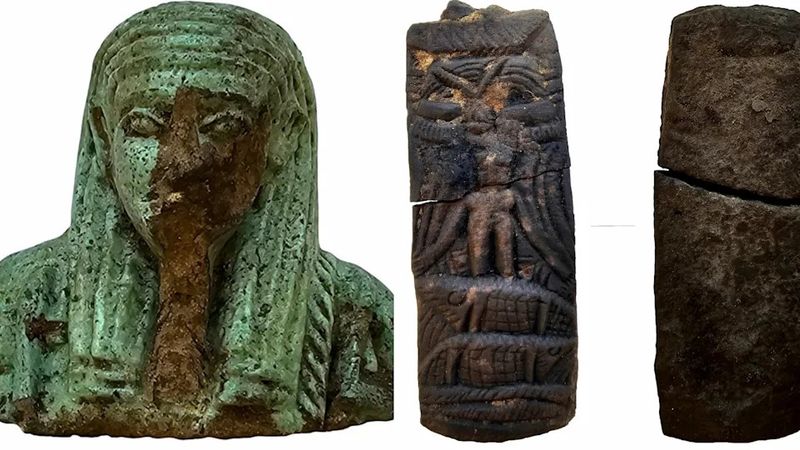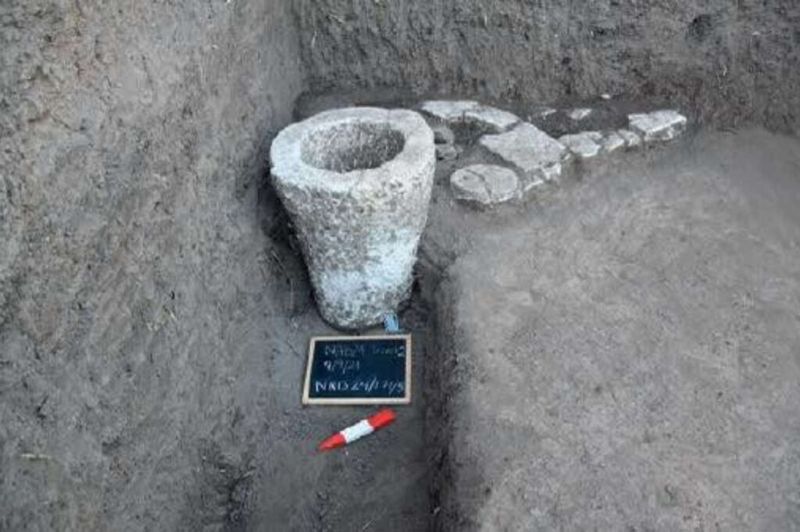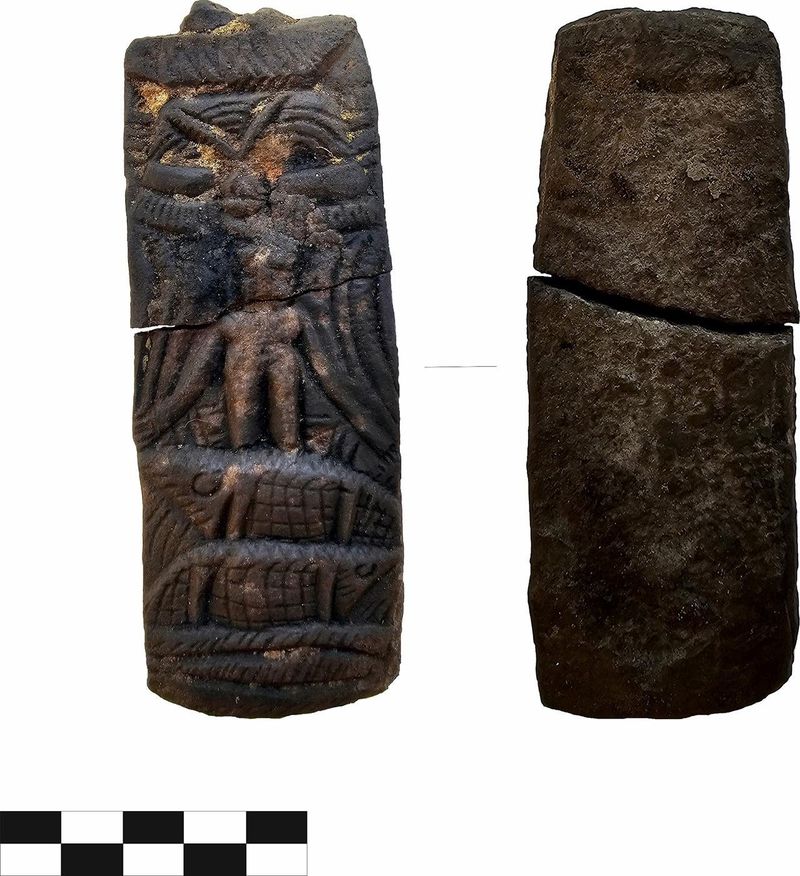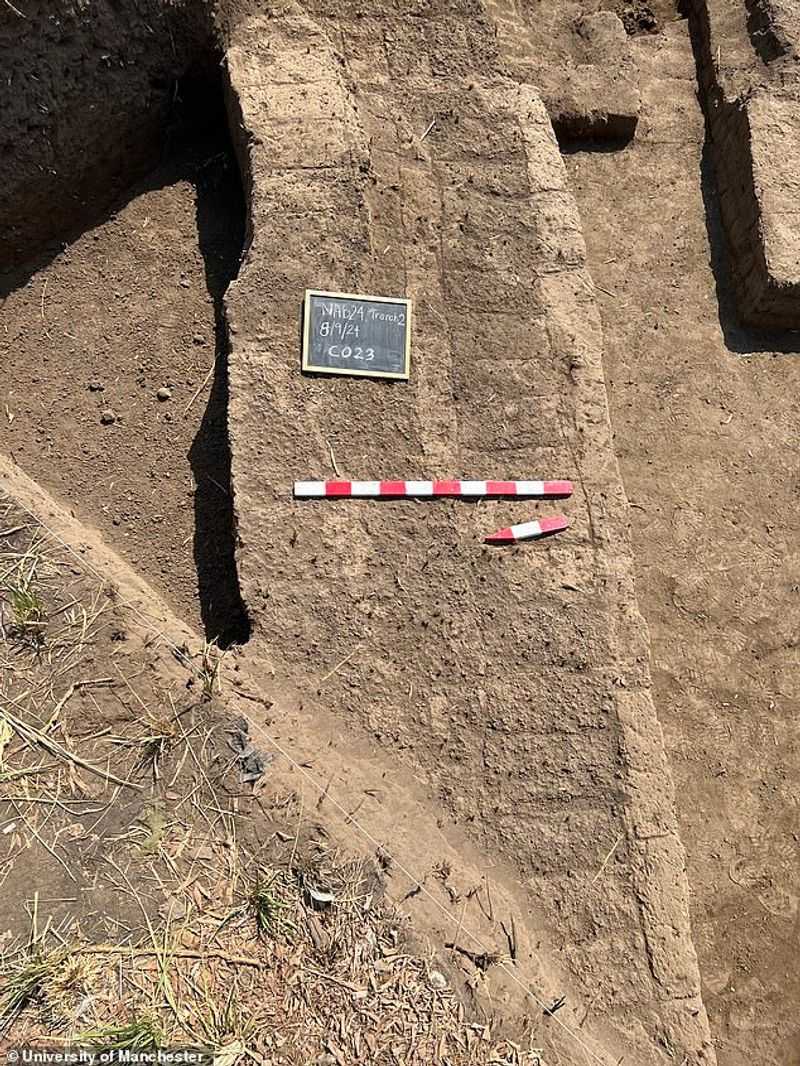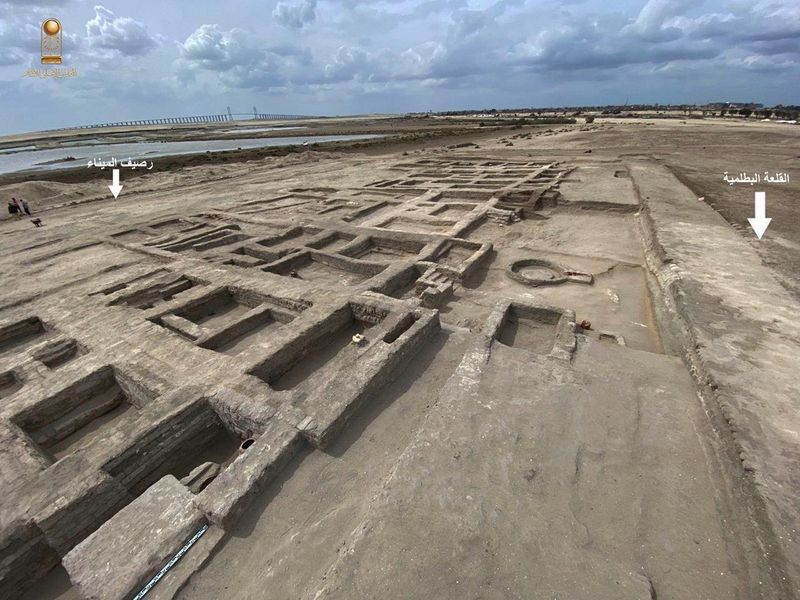A forgotten city has just risen from the sands of Egypt—quite literally.
Buried for over 2,400 years, the ancient city of Imet has stunned archaeologists with its multi-story buildings, economic infrastructure, and a temple dedicated to a cobra goddess.
Discovered beneath Tell el Fara’ina in the Nile Delta, this find is rewriting what we thought we knew about late Egyptian civilization.
1. Multi-Story Buildings in Ancient Egypt? Yes, Really.
The massive mudbrick walls discovered at Imet have archaeologists rethinking ancient Egyptian architecture. Unlike the single-story dwellings typically associated with this era, these structures featured multiple levels and impressively thick foundations capable of supporting significant weight.
Families lived vertically in these urban apartments, with separate areas for cooking, sleeping, and storage. Some buildings even show evidence of internal staircases!
Most fascinating is how these structures were engineered to withstand Nile Delta flooding while maximizing limited urban space—an ancient solution to population density that mirrors modern city planning.
2. A Temple Dedicated to the Cobra Goddess
Sacred stones mark the processional pathway leading directly to Wadjet’s sanctuary. The cobra goddess, considered the fierce protector of Lower Egypt, received elaborate offerings within this newly discovered temple complex.
Hieroglyphics covering the walls tell stories of her divine protection and the rituals performed to gain her favor. Priests would conduct ceremonies involving incense, music, and animal sacrifices to appease this powerful deity.
Unlike other Egyptian temples that honored multiple gods, this sanctuary appears dedicated exclusively to Wadjet—suggesting her exceptional importance to Imet’s residents and revealing a previously unknown religious center in ancient Egypt.
3. 🗺️ Hidden Beneath Tell el Fara’ina for Over Two Millennia
Imagine walking over an entire lost city without knowing it existed! For centuries, locals and tourists alike have traversed the area of Tell el Fara’ina, completely unaware of the treasures buried beneath their feet.
Sand and silt from countless Nile floods gradually entombed Imet, preserving its secrets in a time capsule. The natural burial protected fragile artifacts from looters and weathering that might have otherwise destroyed them.
Modern farmers even planted crops directly above ancient temples and homes, never suspecting that just a few meters below lay one of Egypt’s most significant lost urban centers.
4. Discovered Using Satellite Technology
Revolutionary space technology spotted what human eyes missed for centuries! Specialized satellites equipped with ground-penetrating radar detected unusual rectangular patterns beneath the desert surface.
These abnormal formations appeared distinctly different from surrounding natural landscapes when viewed through infrared imaging. Computer algorithms helped identify the telltale geometric shapes of human-made structures hidden beneath layers of sand and soil.
After satellite data flagged potential sites, archaeologists conducted targeted excavations rather than digging blindly. This high-tech approach saved years of traditional survey work and pinpointed exactly where to unearth Imet’s buried treasures.
5. 🧱 Unique Urban Planning for the Nile Delta
Cramped together like a modern downtown, Imet’s buildings reveal sophisticated urban design unlike anything seen in southern Egypt. Streets follow a surprisingly organized grid pattern rather than the organic sprawl typical of ancient settlements.
Engineers cleverly designed drainage systems to manage seasonal flooding from the nearby Nile. Water management infrastructure included elevated pathways and strategically placed water collection points.
Residential zones remained distinctly separated from commercial and religious areas—an early form of zoning laws! This advanced city planning demonstrates that Delta Egyptians developed unique solutions to their geographical challenges, creating densely populated urban environments that functioned efficiently.
6. The City Predates the Ptolemaic Period
Hidden beneath newer structures, the oldest layers of Imet date back to Egypt’s Late Period—centuries before Greek influence! Carbon dating of wooden beams reveals construction as early as the 7th century BCE.
Foundation stones bear inscriptions from pharaohs rarely mentioned in historical records. These obscure royal names provide missing pieces in Egypt’s chronological puzzle and suggest the city held greater importance than previously recognized.
Pottery fragments show purely Egyptian designs without Greek artistic elements. This timeline makes Imet particularly valuable to scholars as it represents one of the last purely Egyptian urban developments before Alexander’s conquest forever changed the country’s architectural and cultural landscape.
7. 🌾 They Had Grain Processing Centers
Grinding stones larger than car tires reveal industrial-scale grain processing operations throughout Imet. These massive food production facilities could process enough wheat and barley to feed thousands of residents.
Storage silos built with specialized ventilation systems kept grain dry despite the humid delta climate. Some warehouses could hold enough food to sustain the population through multiple growing seasons!
Animal pens adjacent to these facilities suggest integrated farming practices where livestock would eat grain byproducts while providing fertilizer for fields. This sophisticated agricultural system demonstrates how Imet functioned as a self-sufficient economic hub within ancient Egypt’s broader network of cities.
8. 🧠 It’s a Treasure Trove of Daily Life Details
Perfectly preserved wooden combs still contain 2,000-year-old hair strands! These intimate personal items reveal grooming habits and even health information about Imet’s former residents.
Kitchen areas contain cooking pots with food residue that scientists can analyze to determine exact ancient recipes and dietary patterns. Gaming boards carved into stone benches show how people spent leisure time, with playing pieces made from clay and polished stone scattered nearby.
Children’s toys fashioned from scraps of fabric and wood demonstrate universal aspects of human childhood across millennia. These everyday objects create a vivid picture of ordinary Egyptian lives rarely documented in grand historical records that typically focus on royalty and religious events.
9. Delta-Style Houses That Defy the Norm
Architectural marvels built for the swampy delta environment stand in stark contrast to traditional Egyptian homes. These distinctive dwellings featured raised foundations to prevent flooding and thick walls that provided natural insulation against both heat and humidity.
Windows positioned to catch prevailing winds created natural air conditioning. Family living quarters typically occupied upper floors, while ground levels served as workshops or storage areas that could be sacrificed to occasional flooding.
Rooftop gardens provided additional food and cooling benefits! This regional adaptation shows how ancient Egyptians engineered creative solutions to environmental challenges, developing building techniques specifically suited to delta living conditions.
10. 🧭 It Sheds Light on the Final Days of Ancient Egypt
Scattered coins bearing both Egyptian hieroglyphs and Greek letters tell the story of cultures colliding during Egypt’s transition from pharaonic rule to Ptolemaic control. Abandoned rooms contain personal possessions seemingly left in haste, suggesting a rapid evacuation.
Evidence of fire damage appears in certain sectors, possibly indicating conflict during political upheaval. Religious artifacts show fascinating hybrid imagery combining traditional Egyptian deities with Greek artistic influences.
The city appears to have been largely abandoned rather than continuously inhabited into the Roman period. This archaeological time capsule offers unprecedented insights into how ordinary Egyptians experienced the dramatic cultural shifts that marked the end of independent ancient Egyptian civilization.
